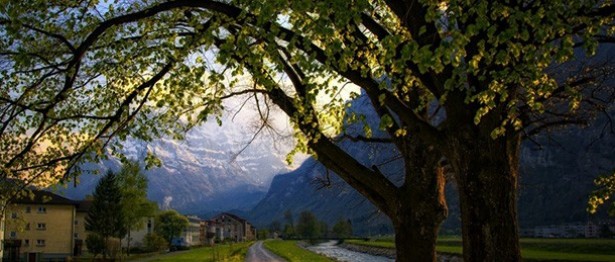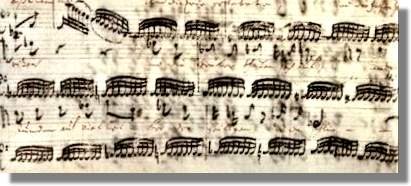
Bach, Prelude BWV 1007 (TAB)
Transcription and Fingering: Renato Bellucci
 Preludes are, generally speaking, "appetizers" for the suite. They introduce the key and many musical ideas which will be developed in the movements (dances) that will follow.
Preludes are, generally speaking, "appetizers" for the suite. They introduce the key and many musical ideas which will be developed in the movements (dances) that will follow.
This description is probably very accurate especially since it comes from a time when music was not a free art form but was strictly associated to other activities such as dance or prayer. The praeambula was the first spark of an amazing revolution which would be coined in the words art music.
Bach was the essence of art music. He dedicated all his work to God but to Johannes, music was meant "to be worthy of" God. Therefore, when his genius was freed from the strict musical forms of the time and was allowed to wander in a free form such as the prelude, semi-miracles would result.
This is the reason why Bach preludes can stand alone as great masterworks. The soul of the composer stands out in every measure.
Bach Manuscript
In Bach's case, Preludes acquire such a dimension that they stand alone as complete units, displaying all the German genius' creativity and spirit.
Staff and Video 1
I used to slur the last two 16th notes of the first group. I no longer do. Nevertheless, you try both and decide accordingly. In the video I play both so as to give you an idea. Remember to tune string 6 to D. The repeating D at the base is called pedal (from the pedal of the Baroque organ). It is also Ostinato (Italian for stubborn) because it repeats relentlessly. It creates the still background over which the moving arpeggio contrasts and builds majestically.
Video 1
Staff and Video 2
The Barre in measure 1 is a small 2 strings barre. To place finger 2 over the F# in the last measure, finger 2 contracts and crosses over finger 1. Use the body and wrist to achieve the movement. Watch the video closely.
Video 2
Staff and Video 3
The opening section gives way to the beginning of a fantastic trip fueled by genius. I like the a finger sequence to achieve a clear ostinato. The alternative fingering in green is a great fingering possibility (Kindly submitted by guitarist Daniel Carter) which presents the hand in the correct position (pos. 4) with anticipation for the bass sequence. With the thumb, bring out the F# A G# F# sequence. The last measure is supposed to sound suspended. Almost like a campanella.
Video 3
Staff and Video 4
The first measure prepares for the Bm arpeggio in measure 2. The transition is gorgeous. Build some tension by using finger P for counterpoint in mid measure 1. I also use p i a a - a i a i to play the Bm arpeggio sequence. I switch according to how my fingernails behave.
Video 4
Staff and Video 5
Bach does a marvelous job at moving the melody breaking scales in parts by means of small jumps. The beginning of each scale note group should be slightly stressed. You can also choose the following alternate fingering: Instead of using finers 4 and 1 for the low F# and the low E (both on string 4) in measure 1, use fingers 3 and 1 instead (see video below).
Video 5
The advantage of using fingers 3 and 1 is that by doing so, it is less prone to cause a left hand string squak. The position change is made in a perpendicular manner with respect to string 4.
Complementary Video
Revision: Asunción, December 15, 2012
 Back to Top
Back to Top







